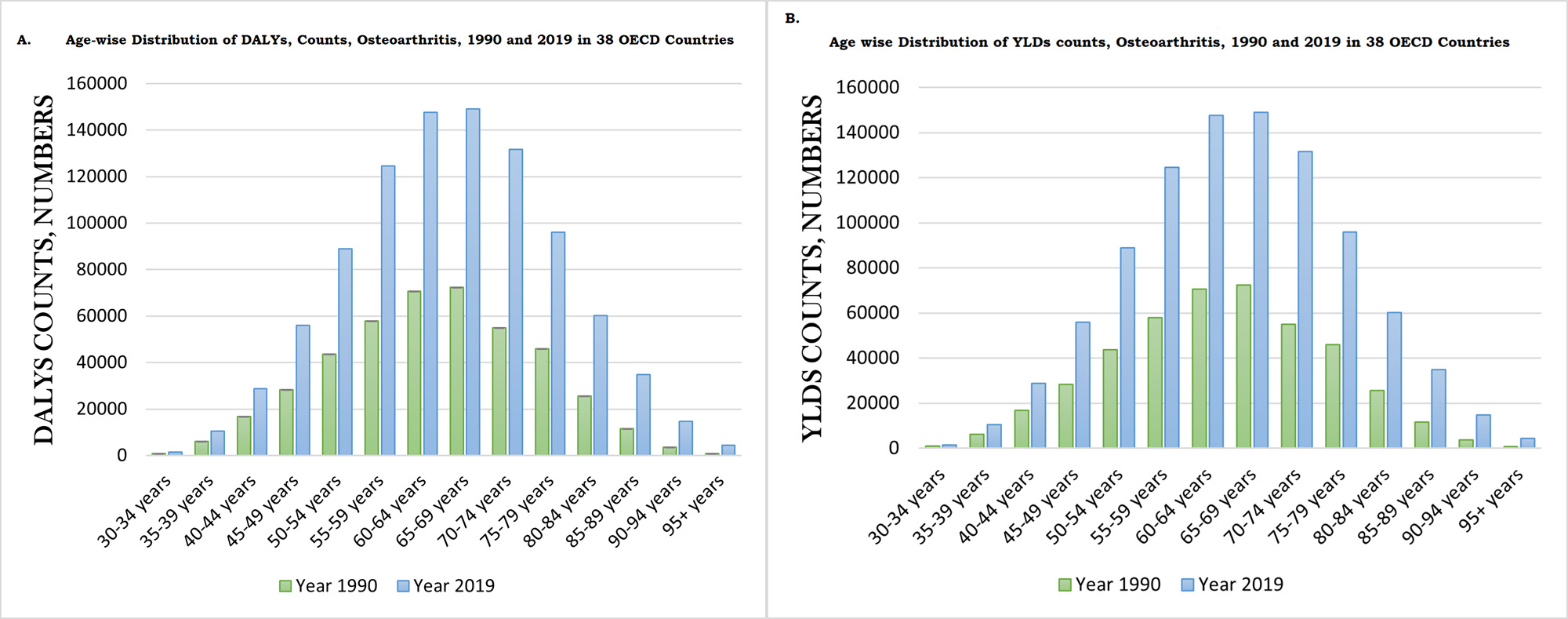Session Information
Session Type: Poster Session A
Session Time: 9:00AM-11:00AM
Background/Purpose: The burden of osteoarthritis related to high body mass index (BMI) in OECD countries is a significant public health concern. Osteoarthritis is strongly associated with obesity, and the increasing prevalence of obesity in many OECD countries has contributed to the rising burden of osteoarthritis. This study was aim at assessing the Global Burden of Osteoarthritis due to High BMI, in 38 OECD Countries from 1990-2019.
Methods: his study compiled 38 OECD Countries data on the duration of disability caused by osteoarthritis (OA) linked to high BMI from the Global Burden of Disease (GBD) 2019 dataset. The analysis systematically examined the burden of disability attributed to OA in relation to high BMI, considering factors such as age, sex, and annual percentage of change (APC).
Results: There has been a significant increase in the total number of Disability-Adjusted Life Years (DALYs) attributed to Osteoarthritis due to an alarming rise in body mass index (BMI) between 1990 and 2019. The study reveals that the DALYs increased by 116% (95%UI: 102%-144%) during this period, indicating a concerning trend in the burden of the disease.
The analysis of age standardized DALYs provides further insights into the impact of Osteoarthritis across different countries. In 2019, the highest age standardized DALYs were observed in the United States, with a rate of 59 per 100,000 individuals (95%UI: 25-128). Following closely behind was Australia, with a substantial burden of Osteoarthritis reflected in the age standardized DALYs.
On the other end of the spectrum, Japan exhibited the lowest age standardized DALYs for Osteoarthritis in 2019, with a rate of 22.44. This suggests a relatively lower burden of the disease in Japan compared to other countries analyzed in the study.
Furthermore, when considering the annual percentage change in DALYs, Australia experienced the highest increase at 47%, indicating a rapid escalation of the disease burden within the population. Chile followed closely behind with a substantial annual percentage change in DALYs. These findings underscore the urgency for targeted interventions and preventive measures to address the rising burden of Osteoarthritis in these countries.
Conclusion: The burden of osteoarthritis associated with high BMI in OECD countries is a pressing issue. Combating this burden requires collaborative efforts from policymakers, healthcare providers, and individuals themselves. By promoting healthy lifestyles, early intervention, and evidence-based management strategies, it is possible to reduce the impact of obesity-related osteoarthritis and improve the overall health and well-being of affected individuals and societies.
To cite this abstract in AMA style:
Gadhiya D, Patel U, Chhayani H, Shah K, Patel S, Adedara V, Patel D, Desai H. Burden of Osteoarthritis Attributable to High BMI in 38 OECD Countries: A Benchmarking Analysis [abstract]. Arthritis Rheumatol. 2023; 75 (suppl 9). https://acrabstracts.org/abstract/burden-of-osteoarthritis-attributable-to-high-bmi-in-38-oecd-countries-a-benchmarking-analysis/. Accessed .« Back to ACR Convergence 2023
ACR Meeting Abstracts - https://acrabstracts.org/abstract/burden-of-osteoarthritis-attributable-to-high-bmi-in-38-oecd-countries-a-benchmarking-analysis/


